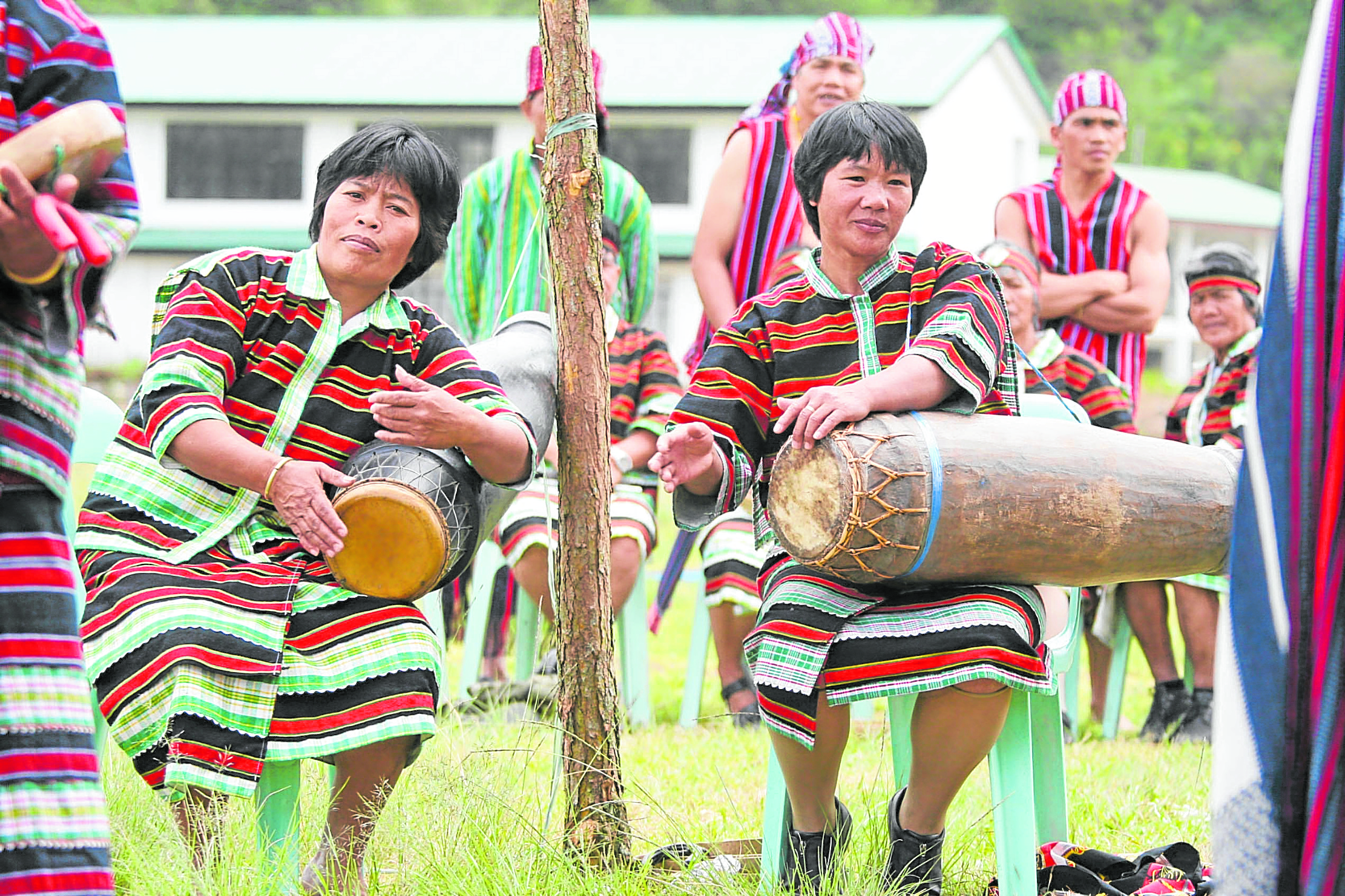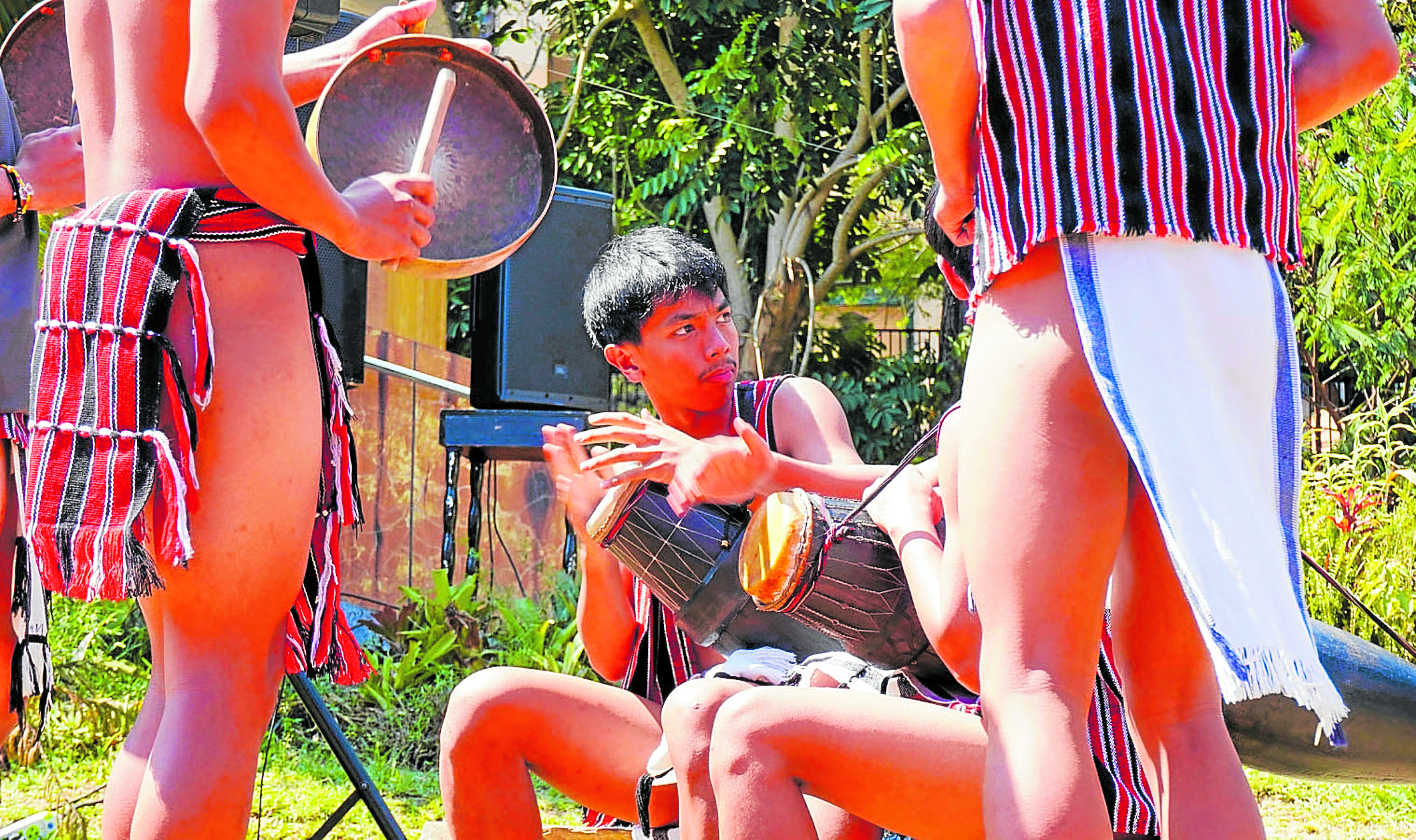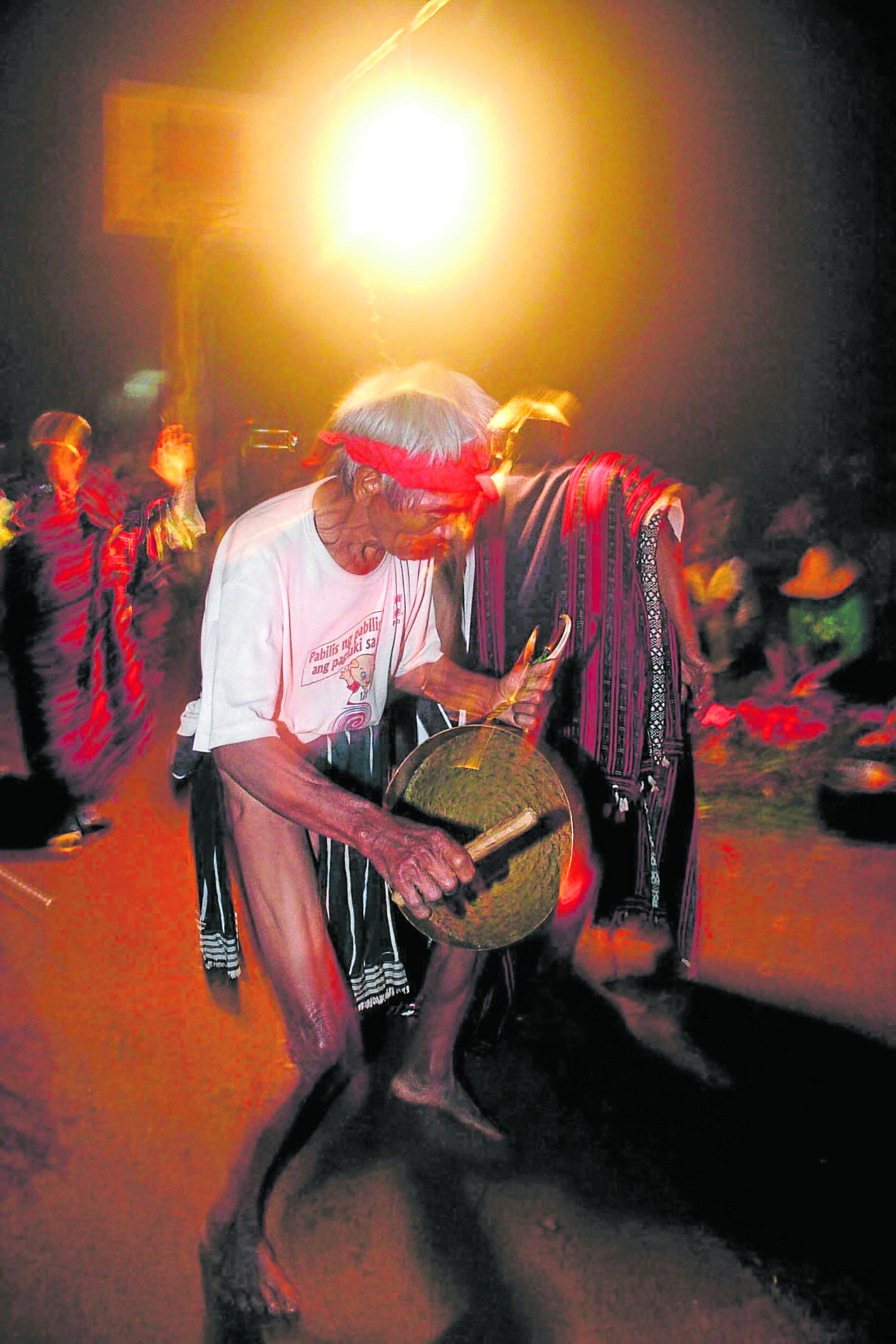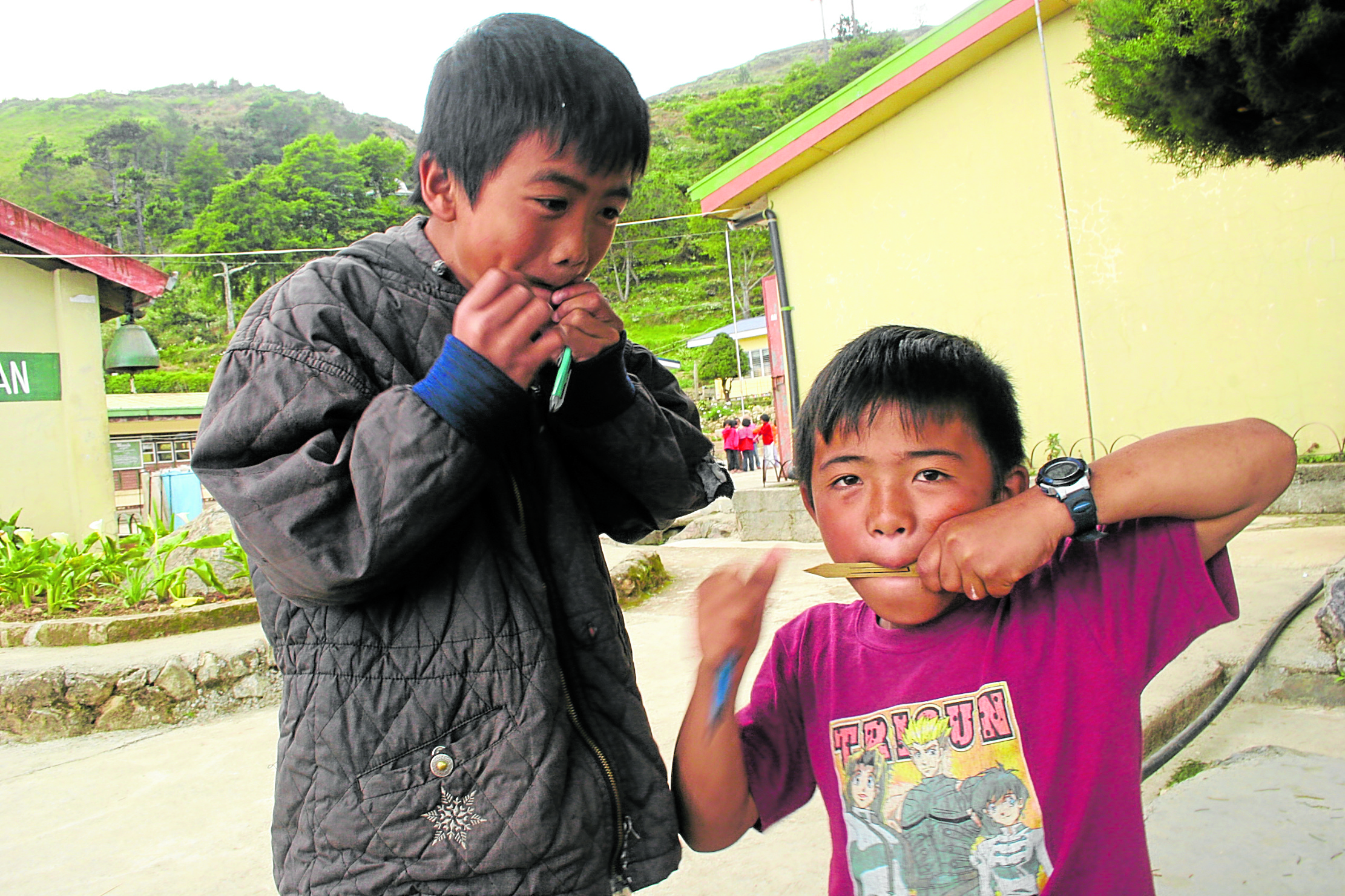For Ibaloys, music is language of the soul

TRANSCENDING GENERATIONS Ibaloys believe music is the soul of the community, and the youngest community members, whether in Baguio City or in Benguet towns like Buguias, continue to learn to play the “solibao” (native drum) and gong and perform during gatherings. —PHOTO BY ROLAND RABANG
BAGUIO CITY—The grandchildren and great-grandchildren of the late Ibaloy clan leader Mateo Cariño and his siblings gathered on Feb. 22 to listen to the melodies of their ancestral past.
They sang along when elder Felix Siplat performed “Bagbagto,” a playful tune enjoyed by children. Often taught in classrooms, the rhythmic Bagbagto is popular among many Cordillera communities but most performers acknowledge that the lyrics have no sensible meaning.
“It’s always been nonsensical to us when we were kids,” said a young participant.
The song is a succession of words that sound alike: “Bagbagto, bagbagto-lambik/Tulambik, tulambawikan/Bawikan, bawikalanay/Kalanay, kalanapunay/Napunay, napunayagta/Nayagta, nayagtagumba/ Tagumba, tagumbaya-aw/ Baya-aw, baya-atinbao/Antinbao, Atin-bayanggaw …”
Numerous stories try to explain its origin, including a legend among the indigenous peoples group Karao that singing it brought rain to their farms after a woman heard snails create that tune.
Article continues after this advertisementSiplat has a variation of that story which also involved a drought and a community of snails. He said rain poured when children imitated a “conversation” between snails which was “Bagbagto.”
Article continues after this advertisementThe clan members were actually watching Siplat in a video report about the ethnography of Ibaloy songs which were compiled in a cultural mapping project for the National Commission for Culture and the Arts led by the Coro d’llera Music Ministry (formerly the Maryknoll Ecological Sanctuary Choir).
The ministry is a proponent of Cordillera music and has asked Baguio Ibaloy scholars to scan traditional or ceremonial songs or chants, such as “bagbagto” and the “bad-iw” which could date back centuries, and romantic songs that share the melancholy of American country Western tunes.

PHOTO BY NEIL CLARK ONGCHANGCO
Understanding values
Music helps understand the values and motivations of Ibaloys and what they used to cherish during the precolonial period, according to Ibaloy scholar Linda Grace Cariño, one of the researchers tapped to analyze and record Ibaloy harmonies.
“Music is the language of the soul so to understand Ibaloy music is to understand the Ibaloy soul. Fortunately, their old music still lives on today,” said Linda, a former University of the Philippines (UP) Baguio communications professor and a columnist for a local newspaper.
She is the granddaughter of Mateo, the landowner who won the 1909 American Supreme Court ruling that recognized his “native rights” over lands which the colonial government confiscated and had turned into a military garrison. The Native Title Doctrine is the basis for all legal and constitutional protections of indigenous Filipinos, which is celebrated annually in Baguio on Feb. 23, designated as Ibaloy Day.
The Cariño clan assembled a day earlier to conduct a “dawit,” a ritual held at the Baguio cemetery and again at the Ibaloy Garden at Burnham Park to invite the spirits of their long deceased relatives to join them in the Ibaloy Day ceremonies.
Present-day Ibaloys have been looking into their past to help them resolve modern problems, such as discrimination, a lack of economic opportunities for underprivileged indigenous families, and legal obstacles that still prevent many of them from accessing their ancestral lands.

LEGACY Ibaloy elders, like this man from Kibungan, Benguet, pass down their traditional music to the young through community performances. —ROLAND RABANG
Cultural map
Last year, the City Planning, Development and Sustainability Office started Baguio’s cultural mapping, and documented and recorded artifacts, oral stories, and archival records which recognize Baguio’s Ibaloy roots.
Baguio was designed, built and opened to the public in 1909 by the American colonial government which originally intended Baguio to be its first hill station. In the process, many of Baguio’s Ibaloy inhabitants were pushed to the city fringes.
The Ibaloy music collected by Linda and fellow researchers like Rosella Camte Bahni are often narratives of their history as it applies to their respective periods.
For instance, the bad-iw is a “seven-syllable melody” delivered spontaneously by a male and female “manbad-iw” (bad-iw performer), or by the whole community in any sort of gathering, Linda said.
One of the Ibaloys’ “highly valuable intangible cultural heritage that is passed on as song from one generation to another,” the bad-iw is currently performed before and during Ibaloy Day, Linda said. The female man-ba-diw’s song is performed like poetry and is often about family members who reunite to take care of each other, she added.
The female often sings: “Balbalang sha ni onuran (Hopefully they would follow)/Kamun waray inges niyay (Whenever there is a time like this)/Kita kaman-dingay (To come and see each other a while)/Kabagayan jen egman aamta (Relatives who have not known each other)/Man titiningKay era (Now greet and look after each other).”

YOUNGMUSICIANS Ibaloy boys from Sayangan village in the Benguet town of Atok play jaw harps made of bamboo called “kol-ong.” —ROLAND RABANG
Rhythm
The cultural mappers have cited “The Vocal Repertoire of the Ibaloi from Kabayan,” the 2017 book of National Artist for Music Ramon Pagayon Santos, which states that “bad-iw” performers often compose their lyrics on the spot. Some of the performances, however, may be recollections of “bad-iw” versions which were passed down because of their “elegance,” Santos wrote.The Cariño clan was also told about what Ibaloys considered to be lamentations like “Bango, Bangon ca Ina (Wake up, Wake up, Mother),” which was recorded as far back as 1905 by German scholar and expatriate Otto Scheerer. It was also among the “tamiyah” (old songs) documented by Santos.
Maybe the most peculiar feature of Ibaloy music is how it has crossbred with American cowboy music, Linda said.
American singer Merle Haggard’s 1968 song, “Today I Started Loving You Again,” for instance, is part of the Ibaloy musical ethnography because of how often it was sung and is still performed by Ibaloys.
READ: Ibaloys reconnect with past through photographs
UP Baguio communications professor Jimmy Fong said this was tied to how Ibaloys had incorporated the American country sound into their culture. Fong, an Ibaloy, was cited in the ethnography for his 2007 published paper on the similarities between Ibaloy cultural identity and American cowboy culture.
Fong, in his paper, said the Americans brought both secular and sacred music to the country at the turn of the 20th century, so “it is not surprising that two of the most popular melodies being used in local (Ibaloy) songs are the hymn tunes ‘Love at Home’ by J. H. McNaughton and ‘Amazing Grace.’
“The Bontoc Kankanaey song ‘Nan Layad Nenlikatan’ (The love that we struggled for), which is sung to the modified tune of ‘Love at Home,’ is probably a Cordillera pop song,” he said.
“The people of the Cordillera happen to like the folk, rock and country genre which is also closely associated with the rustic ‘Western’ and cowboy lifestyle,” he said.